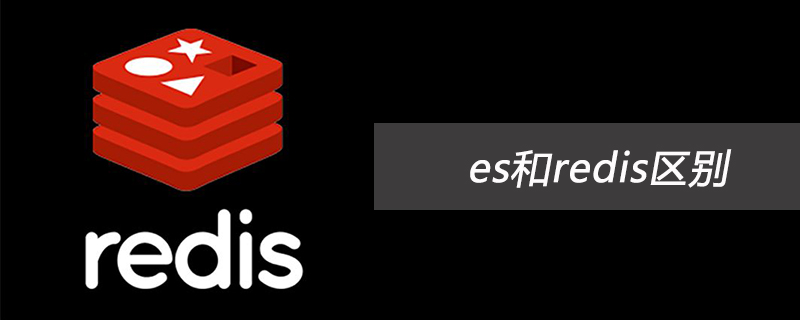
Redis cluster architecture diagram

The blue color in the above picture is the redis cluster node.
Use the ping command between nodes to test whether the connection is normal. There is no primary distinction between nodes. When you connect to any node for operation, it may be forwarded to other nodes.
1. Redis fault tolerance mechanism
Nodes will send ping commands to each other regularly to test the health status of the nodes. When the nodes receive the ping command, they will Returns a pong string.
Voting mechanism: If a node A sends a ping to node B and does not receive a pong return, other nodes will be notified to send ping to B again. If more than half of the nodes in the cluster cannot receive the pong from node B. Then it is considered that node B is down. Generally, a backup node is provided for each node. If it fails, it will be switched to the backup node.
2. Redis cluster storage principle
Redis will perform a hash operation on each stored key and generate a hash value of [0-16384] (first
crc algorithm then takes the remainder of 16384).
In the case of a cluster, the interval [0-16384] is split and placed in different redis.
3. Redis persistence
Snapshotting: regularly save the data in Redis memory to the hard disk
AOF: save all commands The operation is saved to the AOF. The synchronization frequency of AOP is very high. Even if the data is lost, the granularity is very small, but it will have an impact on performance.
2. Cluster environment construction
##redis cluster management tool redis-trib.rb Relying on the ruby environment, you first need to install the ruby environmentInstall ruby
yum install ruby yum install rubygemsInstall the interface program for ruby and redisCopy redis-3.0.0.gem to /usr/local NextExecute:
gem install /usr/local/redis-3.0.0.gem
3. Create a Redis cluster
On one server, you can use different port numbers To represent different redis servers. The Redis cluster requires at least three servers, and each server requires a backup server, so at least 6 servers are required. The port planning is as follows: Master server: 192.168.100.66 :7001 :7002 :7003Slave server: 192.168.100.66 :7004 :7005 :7006In /usr/ local Create a folder to store the server programmkdir 7001 7002 7003 7004 7005 7006If you want redis to support the cluster, you need to modify the cluster-enabled yes# of the redis.config configuration file. ##In this example, we use ports to distinguish different redis services, so we also need to modify the port of redis.config to the corresponding port.
After modifying the configuration file, copy the bin of the redis installation directory to each directory above. middle.
Enter 7001/bin/ 7002/bin respectively....
Start the service ./redis-server ./redis.conf
View the redis process: ps - aux|grep redis The following figure shows that the startup is successful
 Create the cluster:
Create the cluster:
Change the redis-3.0.0/src/redis of the previously decompressed folder -trib.rb is copied to the redis-cluster directory
Run
./redis-trib.rb create --replicas 1 192.168.100.66:7001 192.168.100.66:7002 192.168.100.66:7003 192.168.100.66:7004 192.168.100.66:7005 192.168.100.66:7006
If the execution reports the following error:
[ERR] Node XXXXXX is not empty. Either the node already knows other nodes (check with CLUSTER NODES) or contains some key in database 0
The solution is to delete the generated configuration file nodes.conf, if If it fails, it means that the node created now includes the node information of the old cluster. You need to delete the persistence file of redis and then restart redis, such as: appendonly.aof, dump.rdb
If successful, enter the following:
 Query cluster information:
Query cluster information:
 Instructions:
Instructions:
./redis-cli -c - h 192.168.101.3 -p 7001, where -c indicates connecting to redis in cluster mode, -h specifies the ip address, and -p specifies the port number
cluster nodes Query cluster node information
cluster info Query cluster status information

Step one: Connect to the cluster
./ redis-trib.rb reshard 192.168.101.3:7001 (connect to any available node in the cluster)
Step 2: Enter the number of slots to be allocated
 Enter 500 to allocate 500 slots
Enter 500 to allocate 500 slots
Step 3: Enter the node id of the receiving slot
这里准备给7007分配槽,通过cluster nodes查看7007结点id为15b809eadae88955e36bcdbb8144f61bbbaf38fb
输入:15b809eadae88955e36bcdbb8144f61bbbaf38fb
第四步:输入源结点id

这里输入all
第五步:输入yes开始移动槽到目标结点id

添加从节点
集群创建成功后可以向集群中添加节点,下面是添加一个slave从节点。
添加7008从结点,将7008作为7007的从结点。
./redis-trib.rb add-node --slave --master-id 主节点id 添加节点的ip和端口 集群中已存在节点ip和端口
执行如下命令:
./redis-trib.rb add-node --slave --master-id cad9f7413ec6842c971dbcc2c48b4ca959eb5db4 192.168.101.3:7008 192.168.101.3:7001
cad9f7413ec6842c971dbcc2c48b4ca959eb5db4 是7007结点的id,可通过cluster nodes查看。

注意:如果原来该结点在集群中的配置信息已经生成cluster-config-file指定的配置文件中(如果cluster-config-file没有指定则默认为nodes.conf),这时可能会报错:
[ERR] Node XXXXXX is not empty. Either the node already knows other nodes (check with CLUSTER NODES) or contains some key in database 0
解决方法是删除生成的配置文件nodes.conf,删除后再执行./redis-trib.rb add-node指令
查看集群中的结点,刚添加的7008为7007的从节点:
删除结点:
./redis-trib.rb del-node 127.0.0.1:7005 4b45eb75c8b428fbd77ab979b85080146a9bc017
删除已经占有hash槽的结点会失败,报错如下:
[ERR] Node 127.0.0.1:7005 is not empty! Reshard data away and try again.
需要将该结点占用的hash槽分配出去(参考hash槽重新分配章节)。
测试:
Maven:
<dependencies>
<dependency>
<groupId>redis.clients</groupId>
<artifactId>jedis</artifactId>
<version>2.7.0</version>
</dependency>
<!-- https://mvnrepository.com/artifact/junit/junit -->
<dependency>
<groupId>junit</groupId>
<artifactId>junit</artifactId>
<version>4.12</version>
<scope>test</scope>
</dependency>
<!-- https://mvnrepository.com/artifact/org.springframework/spring-test -->
<dependency>
<groupId>org.springframework</groupId>
<artifactId>spring-test</artifactId>
<version>4.3.10.RELEASE</version>
<scope>test</scope>
</dependency>
</dependencies>普通测试:
@Test
public void redisClusterTest1(){
JedisPoolConfig config=new JedisPoolConfig();
config.setMaxTotal(30);
config.setMaxIdle(2);
Set<HostAndPort> jedisNode=new HashSet<HostAndPort>();
jedisNode.add(new HostAndPort("192.168.100.66",7001));
jedisNode.add(new HostAndPort("192.168.100.66",7002));
jedisNode.add(new HostAndPort("192.168.100.66",7003));
jedisNode.add(new HostAndPort("192.168.100.66",7004));
jedisNode.add(new HostAndPort("192.168.100.66",7005));
jedisNode.add(new HostAndPort("192.168.100.66",7006));
JedisCluster jc=new JedisCluster(jedisNode,config);
jc.set("name","老王");
String value=jc.get("name");
System.out.println(value);
}Spring测试:
配置文件:
<?xml version="1.0" encoding="UTF-8"?>
<beans xmlns="http://www.springframework.org/schema/beans"
xmlns:xsi="http://www.w3.org/2001/XMLSchema-instance"
xsi:schemaLocation="http://www.springframework.org/schema/beans http://www.springframework.org/schema/beans/spring-beans.xsd">
<!-- 连接池配置 -->
<bean id="jedisPoolConfig" class="redis.clients.jedis.JedisPoolConfig">
<!-- 最大连接数 -->
<property name="maxTotal" value="30" />
<!-- 最大空闲连接数 -->
<property name="maxIdle" value="10" />
<!-- 每次释放连接的最大数目 -->
<property name="numTestsPerEvictionRun" value="1024" />
<!-- 释放连接的扫描间隔(毫秒) -->
<property name="timeBetweenEvictionRunsMillis" value="30000" />
<!-- 连接最小空闲时间 -->
<property name="minEvictableIdleTimeMillis" value="1800000" />
<!-- 连接空闲多久后释放, 当空闲时间>该值 且 空闲连接>最大空闲连接数 时直接释放 -->
<property name="softMinEvictableIdleTimeMillis" value="10000" />
<!-- 获取连接时的最大等待毫秒数,小于零:阻塞不确定的时间,默认-1 -->
<property name="maxWaitMillis" value="1500" />
<!-- 在获取连接的时候检查有效性, 默认false -->
<property name="testOnBorrow" value="true" />
<!-- 在空闲时检查有效性, 默认false -->
<property name="testWhileIdle" value="true" />
<!-- 连接耗尽时是否阻塞, false报异常,ture阻塞直到超时, 默认true -->
<property name="blockWhenExhausted" value="false" />
</bean>
<!-- redis集群 -->
<bean id="jedisCluster" class="redis.clients.jedis.JedisCluster">
<constructor-arg index="0">
<set>
<bean class="redis.clients.jedis.HostAndPort">
<constructor-arg index="0" value="192.168.100.66"></constructor-arg>
<constructor-arg index="1" value="7001"></constructor-arg>
</bean>
<bean class="redis.clients.jedis.HostAndPort">
<constructor-arg index="0" value="192.168.100.66"></constructor-arg>
<constructor-arg index="1" value="7002"></constructor-arg>
</bean>
<bean class="redis.clients.jedis.HostAndPort">
<constructor-arg index="0" value="192.168.100.66"></constructor-arg>
<constructor-arg index="1" value="7003"></constructor-arg>
</bean>
<bean class="redis.clients.jedis.HostAndPort">
<constructor-arg index="0" value="192.168.100.66"></constructor-arg>
<constructor-arg index="1" value="7004"></constructor-arg>
</bean>
<bean class="redis.clients.jedis.HostAndPort">
<constructor-arg index="0" value="192.168.100.66"></constructor-arg>
<constructor-arg index="1" value="7005"></constructor-arg>
</bean>
<bean class="redis.clients.jedis.HostAndPort">
<constructor-arg index="0" value="192.168.100.66"></constructor-arg>
<constructor-arg index="1" value="7006"></constructor-arg>
</bean>
</set>
</constructor-arg>
<constructor-arg index="1" ref="jedisPoolConfig"></constructor-arg>
</bean>
</beans>测试类:
@RunWith(SpringJUnit4ClassRunner.class)
@ContextConfiguration({"classpath:spring-config.xml"})
public class RedisClusterTest {
@Autowired
private JedisCluster jedisCluster;
@Test
public void redisClusterTest2(){
jedisCluster.set("username","小明啦啦");
String name=jedisCluster.get("username");
System.out.println(name);
}
}更多redis知识请关注redis数据库教程栏目。
The above is the detailed content of Introduction to redis distributed cluster construction. For more information, please follow other related articles on the PHP Chinese website!
 es和redis区别Jul 06, 2019 pm 01:45 PM
es和redis区别Jul 06, 2019 pm 01:45 PMRedis是现在最热门的key-value数据库,Redis的最大特点是key-value存储所带来的简单和高性能;相较于MongoDB和Redis,晚一年发布的ES可能知名度要低一些,ES的特点是搜索,ES是围绕搜索设计的。
 一起来聊聊Redis有什么优势和特点May 16, 2022 pm 06:04 PM
一起来聊聊Redis有什么优势和特点May 16, 2022 pm 06:04 PM本篇文章给大家带来了关于redis的相关知识,其中主要介绍了关于redis的一些优势和特点,Redis 是一个开源的使用ANSI C语言编写、遵守 BSD 协议、支持网络、可基于内存、分布式存储数据库,下面一起来看一下,希望对大家有帮助。
 实例详解Redis Cluster集群收缩主从节点Apr 21, 2022 pm 06:23 PM
实例详解Redis Cluster集群收缩主从节点Apr 21, 2022 pm 06:23 PM本篇文章给大家带来了关于redis的相关知识,其中主要介绍了Redis Cluster集群收缩主从节点的相关问题,包括了Cluster集群收缩概念、将6390主节点从集群中收缩、验证数据迁移过程是否导致数据异常等,希望对大家有帮助。
 Redis实现排行榜及相同积分按时间排序功能的实现Aug 22, 2022 pm 05:51 PM
Redis实现排行榜及相同积分按时间排序功能的实现Aug 22, 2022 pm 05:51 PM本篇文章给大家带来了关于redis的相关知识,其中主要介绍了Redis实现排行榜及相同积分按时间排序,本文通过实例代码给大家介绍的非常详细,对大家的学习或工作具有一定的参考借鉴价值,希望对大家有帮助。
 详细解析Redis中命令的原子性Jun 01, 2022 am 11:58 AM
详细解析Redis中命令的原子性Jun 01, 2022 am 11:58 AM本篇文章给大家带来了关于redis的相关知识,其中主要介绍了关于原子操作中命令原子性的相关问题,包括了处理并发的方案、编程模型、多IO线程以及单命令的相关内容,下面一起看一下,希望对大家有帮助。
 一文搞懂redis的bitmapApr 27, 2022 pm 07:48 PM
一文搞懂redis的bitmapApr 27, 2022 pm 07:48 PM本篇文章给大家带来了关于redis的相关知识,其中主要介绍了bitmap问题,Redis 为我们提供了位图这一数据结构,位图数据结构其实并不是一个全新的玩意,我们可以简单的认为就是个数组,只是里面的内容只能为0或1而已,希望对大家有帮助。
 实例详解Redis实现排行榜及相同积分按时间排序功能的实现Aug 26, 2022 pm 02:09 PM
实例详解Redis实现排行榜及相同积分按时间排序功能的实现Aug 26, 2022 pm 02:09 PM本篇文章给大家带来了关于redis的相关知识,其中主要介绍了Redis实现排行榜及相同积分按时间排序,本文通过实例代码给大家介绍的非常详细,下面一起来看一下,希望对大家有帮助。
 一起聊聊Redis实现秒杀的问题May 27, 2022 am 11:40 AM
一起聊聊Redis实现秒杀的问题May 27, 2022 am 11:40 AM本篇文章给大家带来了关于redis的相关知识,其中主要介绍了关于实现秒杀的相关内容,包括了秒杀逻辑、存在的链接超时、超卖和库存遗留的问题,下面一起来看一下,希望对大家有帮助。


Hot AI Tools

Undresser.AI Undress
AI-powered app for creating realistic nude photos

AI Clothes Remover
Online AI tool for removing clothes from photos.

Undress AI Tool
Undress images for free

Clothoff.io
AI clothes remover

AI Hentai Generator
Generate AI Hentai for free.

Hot Article

Hot Tools

PhpStorm Mac version
The latest (2018.2.1) professional PHP integrated development tool

Safe Exam Browser
Safe Exam Browser is a secure browser environment for taking online exams securely. This software turns any computer into a secure workstation. It controls access to any utility and prevents students from using unauthorized resources.

SublimeText3 English version
Recommended: Win version, supports code prompts!

Dreamweaver CS6
Visual web development tools

SublimeText3 Mac version
God-level code editing software (SublimeText3)







